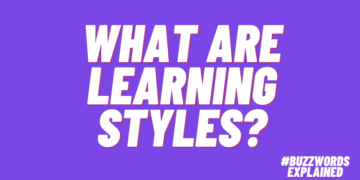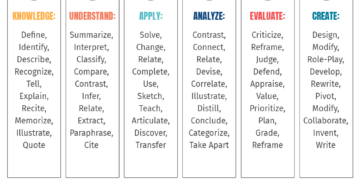Why Is Repetition And Reinforcement Important?
Repetition and reinforcement are critical in eLearning because they help learners remember information, reinforce concepts, and apply knowledge in real-world scenarios. When learners are exposed to new concepts, they may initially retain the information for a short period, but without reinforcement, they may forget it over time. Repetition and reinforcement ensure that learners can recall the information and apply it beyond the initial learning experience.
Research studies have shown that repetition and reinforcement are effective ways to enhance learning outcomes. In a study conducted by the National Training Laboratories Institute, it was found that learners retained only 5% of information presented through a lecture, whereas they retained 90% of information that was taught through practice and application. This study highlights the significance of reinforcing knowledge through practice and application to enhance learning outcomes.
What Is The Ebbinghaus Forgetting Curve?
The Ebbinghaus forgetting curve is a concept that describes how learners forget information over time. The curve suggests that learners forget up to 50% of new information within the first hour of learning, and up to 70% within the first 24 hours. The curve highlights the need for repetition and reinforcement to ensure that learners can retain the knowledge beyond the initial learning experience.
How To Implement Repetition And Reinforcement In eLearning
Here are a few examples of how to implement repetition and reinforcement in eLearning:
1. Incorporate Spaced Repetition
Spaced repetition involves exposing learners to information at intervals, allowing them to retain knowledge in the long term. For example, a course on medical terminology could introduce new terms in the first module, reinforce them in the second module, and test learners’ knowledge of them in the third module.
2. Use Scenarios And Simulations
Scenarios and simulations allow learners to apply knowledge in real-world scenarios, reinforcing concepts and enhancing retention. For example, a course on customer service could include scenarios where learners practice handling challenging situations, reinforcing their customer service skills.
3. Provide Feedback And Remediation
Feedback and remediation allow learners to identify areas where they need improvement, reinforcing knowledge and enhancing retention. For example, a course on data analysis could provide feedback on learners’ performance in quizzes, and offer remediation and links back to content areas within the course so they can refresh and reinforce learning.
4. Use Microlearning
Microlearning involves breaking down information and learning into smaller, highly focused, and digestible chunks, allowing learners to retain knowledge in the long term. For example, we recently built a series of microlearning courses for a client that needed the sales and merchandising teams to learn to better and quickly use their order system technology. The courses included a section on what it was all about, how the process and app functioned together, and why it was important and key to their job and their company. The microlearning modules were on the specific concepts, processes, and app functions; there were built in reinforcing knowledge quizzes, with confidence checks, to help enhance retention. We are also using a new framework we developed that follows the Fibonacci sequence, with each review and practice day occurring after a number of days equal to the sum of the previous two days. This allows for a spaced repetition approach that has been shown to be effective in promoting long-term memory retention.
Why Include Confidence Check Questions In eLearning?
The use of confidence check questions can be an essential aspect of eLearning that allows learners to assess their knowledge and confidence in the subject matter. Confidence check questions can help learners identify gaps in their knowledge, correct misconceptions, and reinforce key concepts, ultimately enhancing learning outcomes.
We know that when confidence check questions are included in eLearning it not only helps learners assess their knowledge and confidence in the subject matter, but it also identifies areas where they need improvement, and reinforces key concepts. Confidence check questions can also help learners build self-awareness and self-regulation, enhancing their learning outcomes. A University of California (UC) San Francisco research study has shown that the use of confidence check questions can enhance learning outcomes. The study found that the use of confidence check questions in an eLearning module enhanced learner engagement and knowledge retention.
Conclusion
The Ebbinghaus forgetting curve highlights the need for repetition and reinforcement to enhance retention and learning outcomes. By incorporating spaced repetition, scenarios and simulations, feedback, quizzes, and remediation, and microlearning, and confidence checks, learners can reinforce knowledge and truly learn to apply skills in real-world scenarios over time.
Sources:
- Ebbinghaus, H. 1885. Memory: A contribution to experimental psychology. New York: Dover Publications.
- University of California, San Francisco. (n.d.). “Instructional Strategies: Confidence Checks.”

Learning Evolution
Learning Evolution is a leader in online training, offering off the shelf content, custom content development and a robust innovative hosted 24×7 learning management system platform that is 100% client customizable.



















